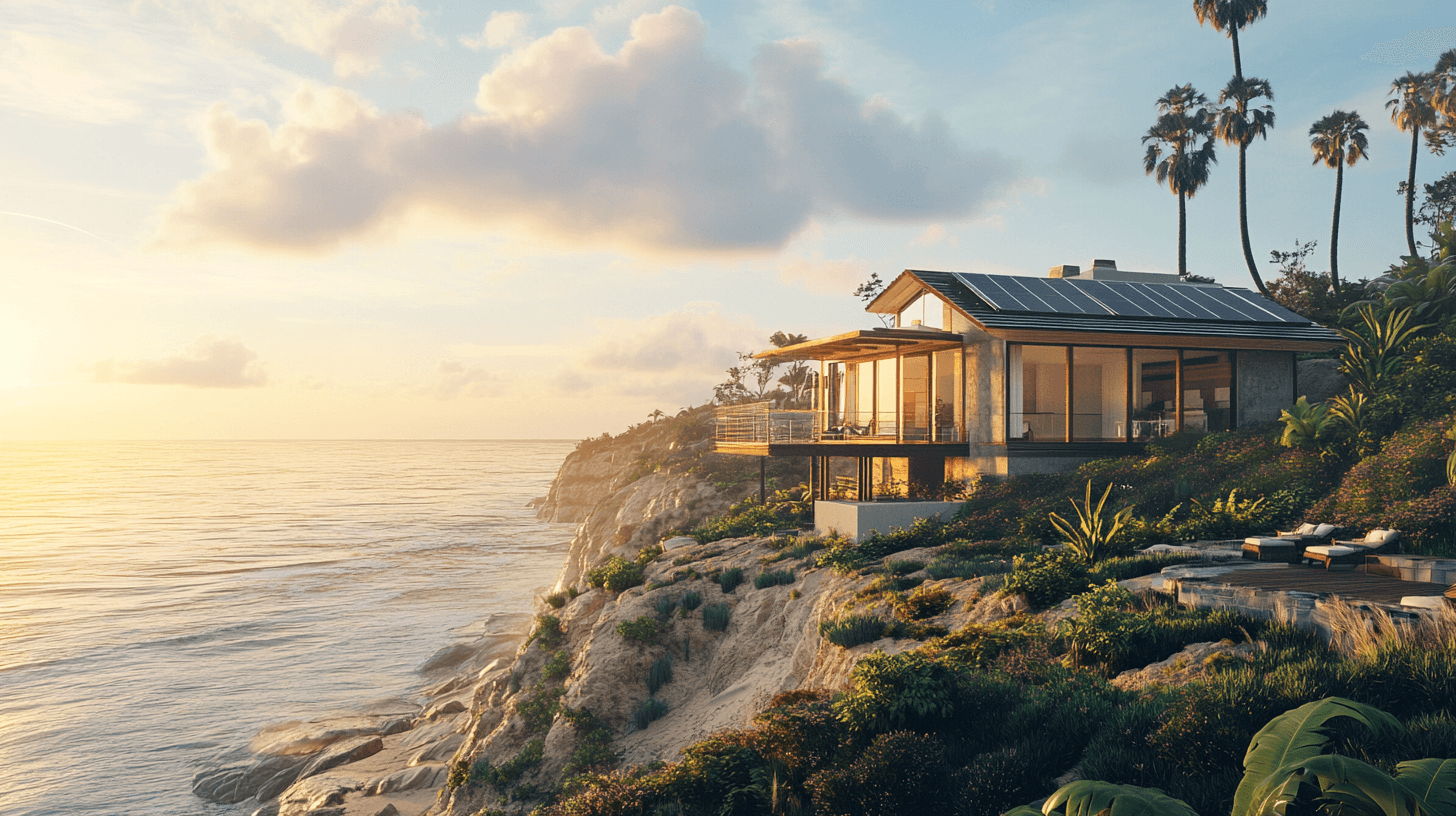Jan 3, 2025
The dream of living off-grid isn't just for traditional homesteaders anymore. From tiny homes and converted shipping containers to earthships and yurts, alternative housing is revolutionizing how we think about sustainable living. Solar power isn't just an option for these unconventional homes – it's often the key that makes them viable.
Let's be real: living off-grid requires careful planning and the right equipment. Solar power systems for alternative shelters need to be both robust and flexible. Whether you're planning to live in a converted school bus or a strawbale house, your power needs are unique, and your solar setup should reflect that.
First, let's talk about what you really need. Beyond the basics of solar panels and batteries, successful off-grid living requires:
A robust charge controller that can handle varying power loads and protect your batteries. For alternative structures, consider MPPT controllers that can maximize power harvest even with unusual roof angles or limited mounting space.
An inverter system sized for your specific needs. Living in a tiny home? A smaller inverter might do. Converting a barn into living space? You'll need something bigger. The key is matching your power generation to your actual usage patterns.
A comprehensive monitoring system. When you're off-grid, you need to know exactly what's happening with your power at all times. Modern systems can alert you via smartphone when batteries are low or systems need attention.
Water pumping solutions are crucial. Many alternative homes rely on well water or rainwater collection systems. Solar-powered pumps can keep your water flowing without straining your main power system.
But here's what many don't consider: climate control in alternative structures can be tricky. Traditional HVAC systems often draw too much power for off-grid setups. This is where smart design comes in. Solar air heaters, thermal mass walls, and DC-powered ventilation systems can dramatically reduce your energy needs while keeping you comfortable.
Storage is another critical factor. Alternative homes often have limited space, so choosing the right battery system is crucial. While lithium batteries are popular, some off-gridders are exploring saltwater batteries or other alternatives that better match their environmental values.
The beauty of solar in alternative housing is its scalability. Starting small? Begin with a basic system that covers essential needs, then expand as your comfort and needs grow. Many successful off-gridders started with just enough power for lights and basic electronics, gradually adding capacity for power tools, appliances, or even electric vehicle charging.
For those considering this path, community is key. Connect with others living off-grid in alternative structures. They're often the best source of practical advice about what really works. Online forums and local sustainability groups can provide invaluable insights about everything from panel mounting on unusual surfaces to winterizing your water systems.
Remember, going off-grid in an alternative structure isn't about deprivation – it's about freedom. Freedom to live where you want, how you want, while minimizing your environmental impact. Solar power makes this freedom possible, providing reliable, sustainable energy for whatever unique living situation you choose.
The dream of living off-grid isn't just for traditional homesteaders anymore. From tiny homes and converted shipping containers to earthships and yurts, alternative housing is revolutionizing how we think about sustainable living. Solar power isn't just an option for these unconventional homes – it's often the key that makes them viable.
Let's be real: living off-grid requires careful planning and the right equipment. Solar power systems for alternative shelters need to be both robust and flexible. Whether you're planning to live in a converted school bus or a strawbale house, your power needs are unique, and your solar setup should reflect that.
First, let's talk about what you really need. Beyond the basics of solar panels and batteries, successful off-grid living requires:
A robust charge controller that can handle varying power loads and protect your batteries. For alternative structures, consider MPPT controllers that can maximize power harvest even with unusual roof angles or limited mounting space.
An inverter system sized for your specific needs. Living in a tiny home? A smaller inverter might do. Converting a barn into living space? You'll need something bigger. The key is matching your power generation to your actual usage patterns.
A comprehensive monitoring system. When you're off-grid, you need to know exactly what's happening with your power at all times. Modern systems can alert you via smartphone when batteries are low or systems need attention.
Water pumping solutions are crucial. Many alternative homes rely on well water or rainwater collection systems. Solar-powered pumps can keep your water flowing without straining your main power system.
But here's what many don't consider: climate control in alternative structures can be tricky. Traditional HVAC systems often draw too much power for off-grid setups. This is where smart design comes in. Solar air heaters, thermal mass walls, and DC-powered ventilation systems can dramatically reduce your energy needs while keeping you comfortable.
Storage is another critical factor. Alternative homes often have limited space, so choosing the right battery system is crucial. While lithium batteries are popular, some off-gridders are exploring saltwater batteries or other alternatives that better match their environmental values.
The beauty of solar in alternative housing is its scalability. Starting small? Begin with a basic system that covers essential needs, then expand as your comfort and needs grow. Many successful off-gridders started with just enough power for lights and basic electronics, gradually adding capacity for power tools, appliances, or even electric vehicle charging.
For those considering this path, community is key. Connect with others living off-grid in alternative structures. They're often the best source of practical advice about what really works. Online forums and local sustainability groups can provide invaluable insights about everything from panel mounting on unusual surfaces to winterizing your water systems.
Remember, going off-grid in an alternative structure isn't about deprivation – it's about freedom. Freedom to live where you want, how you want, while minimizing your environmental impact. Solar power makes this freedom possible, providing reliable, sustainable energy for whatever unique living situation you choose.




















